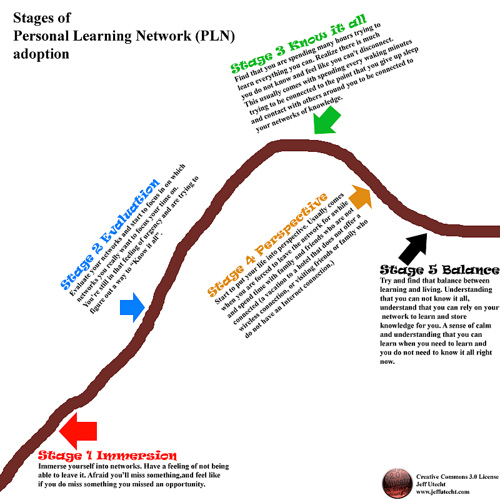BFTP: What gets tested, gets taught
 Sunday, January 9, 2011 at 06:41AM
Sunday, January 9, 2011 at 06:41AM A weekend Blue Skunk "feature" will be a revision of an old post. I'm calling this BFTP: Blast from the Past. Original post January 10, 2006. This post was also turned into a column of the same name. The separate vs integrated controversy continues and IT/IL skills still are not given the importance in education they deserve. But then, it's only been 30 years or so ...
Does teaching technology skills as a separate curriculum mean they can't be integrated into the content areas as well? I've addressed this question before regarding information literacy skills in a column called Owning Our Curriculum. I'll try to make the same points about technology literacy here that I did about information literacy in the column. (I have a tough time separating info and tech literacy anymore anyway).
- Info/tech literacy is a basic skill every student should master. It should be treated with the same importance as the other recognized basic skills of reading, writing and math.
- Teaching basic skills as a separate, non-integrated subject is viewed as good educational practice. We have reading, writing and math curricula, teaching materials, courses, teachers and tests.
- Basic skills should be "integrated" (or perhaps a better word is applied) across the curriculum. We want social studies and science teachers to "teach" writing skills and practice writing, yes?
- Integrating skills does not eliminate the need for basic skills curricula, teaching materials, courses, teachers and tests.
- The public expects schools to be accountable for teaching basic skills. The current way of being accountable is through testing. (See more on this below in my response to David Warlick.)
- What gets tested, gets taught.
I don't see that integration and viewing information/technology as a separate set of skills to be taught are exclusive. If such skills are only integrated, nobody has responsibility for student acquistion of such skills and everybody has the opportunity to pass the responsibility on to someone else.
David Warlick defends the messiness of authentic assessment in More Loose Change on his 2 Cents Worth blog (and in a reply to the Blue Skunk post Loose Change - follow-up):
...although performance/production based assessment is messy, messy is what teachers do. Certainly multiple-choice/true-false assessments have always been a convenient crutch to many teachers. But project-based/product-based teaching, learning, and assessment were much easier to implement before high-stakes testing. The critical change is that communities have lost confidence in their teachers (for no good reason), and education has begun to lose confidence in itself. I think that we need to empower teachers and then turn education back over to them, the experts.
I don't disagree with David, but I would also say there is a place and need for testing* as well as assessment when it comes to I/T skills if they are to me taken seriously by educators. I am huge fan of Rick Stiggins and his Assessment for Learning work. Hell, I offer workshops on authentic assessment of I/T skills myself. Good, messy assessments using well-designed tools are critical to the teaching and learning process. They are good for kids, promoting growth, not simply categorization.
The problem is that we live in a society that believes in testing. And quite honestly, a degree of accountability shown through testing is not all bad. (See Exposing Shameful Little Secrets.) Our problem is that the pendulum has swung too far in the direction of testing and the results being used punatively. This is a problem with test expectations and result use, not testing in itself. And hey, you want something taken seriously by teachers just put it on the next high-stakes test. That is the reality as much as we may not like it.
* I will admit that I have yet to see a very good "objective" test on basic IT skills.









